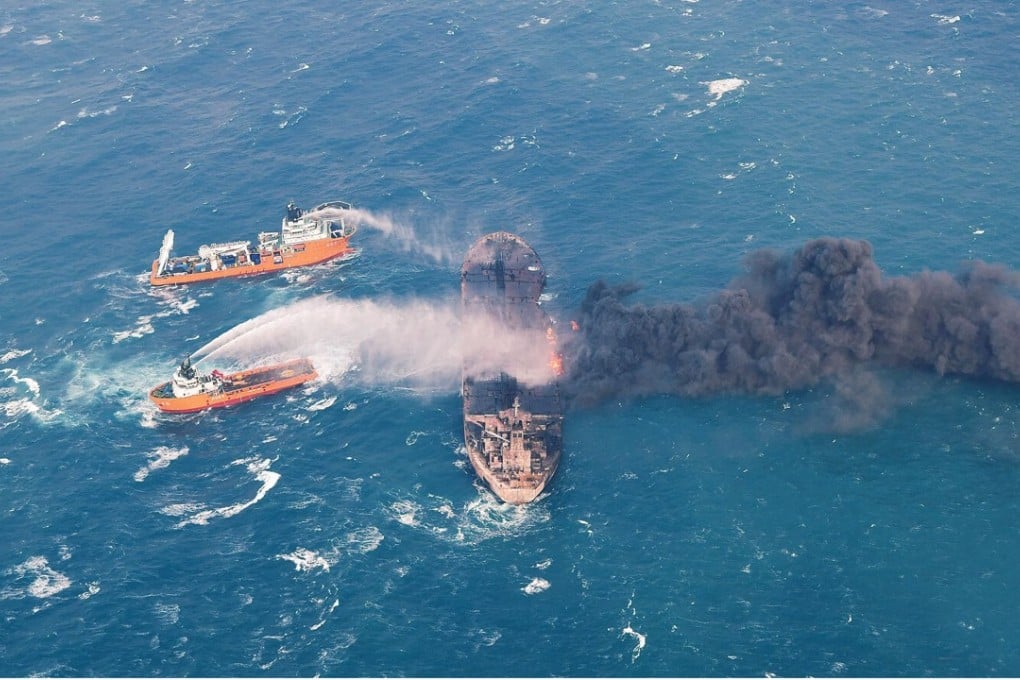Muddy waters: How China-Japan territorial disputes delayed the response to the Sanchi oil spill
Mark J. Valencia says a slow response would worsen the already considerable environmental impact of the spill, and an agreement over the handling of such disasters should be reached to curtail further ecological damage in the future

China to send in deep-sea divers to plug oil leaks in sunken Iranian tanker Sanchi
Despite being obliged by the UN Convention on the Law of the Sea to protect the marine environment, both China, in whose 200-nautical-mile exclusive economic zone the accident occurred, and Japan, in whose claimed exclusive economic zone the vessel sank, were slow to respond. One reason was uncertainty over how much of the condensate cargo was in the water and how much had burned off in the fire. Also contributing to the delay were lack of knowledge of the environmental effects and the difficulty of cleaning up a substance that was less visible and more difficult to separate from seawater than crude oil.
Both may have been concerned that unilateral actions taken or tacit permission given for the other to act may prejudice their claims
China and Japan have tried to avoid clashes in their disputed area. They agreed to share fish stocks in defined portions of the area. They established a mutual “prior notification” regime for scientific research there. They also agreed in principle to implement joint development of seabed resources in the central East China Sea. But they have no joint contingency plans to respond to shared environmental emergencies.
Where is the spill now? The Japanese coastguard has reported black globules on nine islands between Okinawa and Kyushu. If the globules are from the bunker fuel, it could mean that the condensate has already come ashore.
